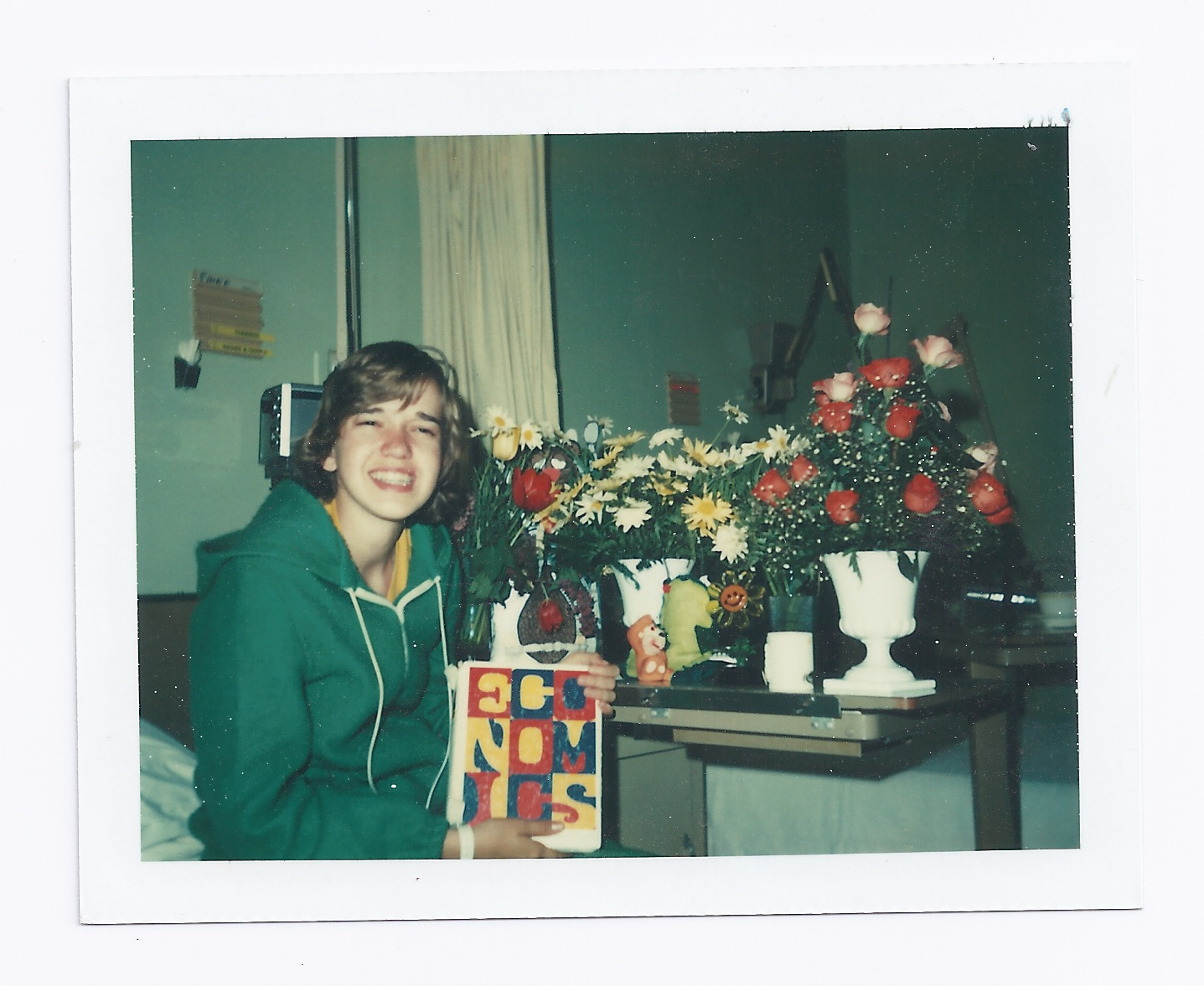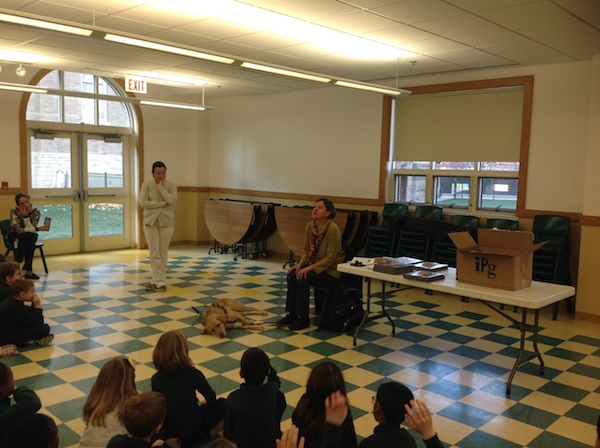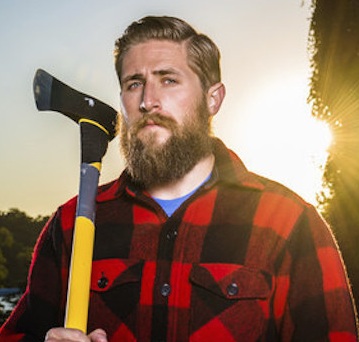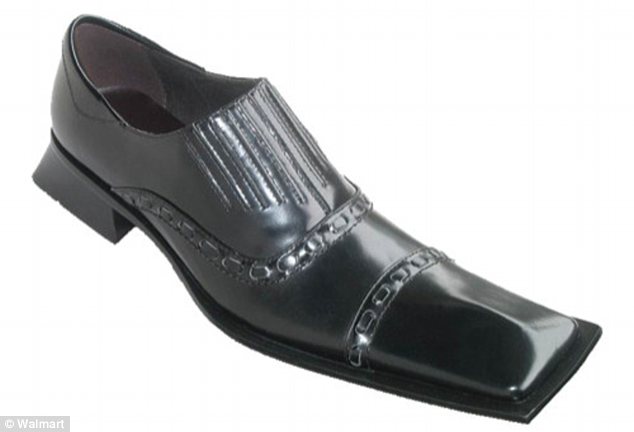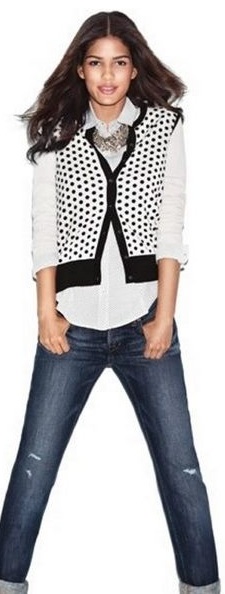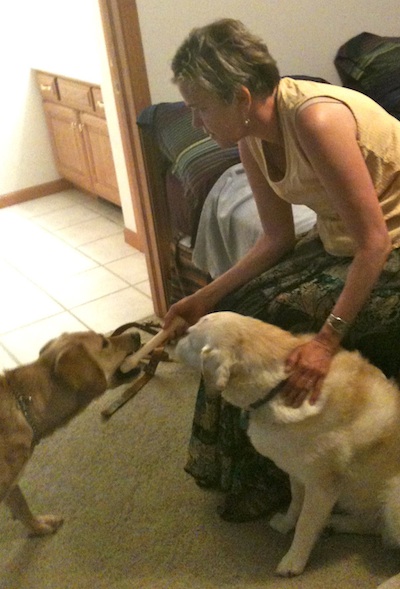A letter to my teenage self
November 26, 2014 • 22 Comments • Posted in blindness, careers/jobs for people who are blind, Uncategorized, writingEvery once in a while my part-time job at Easter Seals Headquarters asks me to do something out of my comfort zone. Writing a letter to my teenage self was one of those things.
I’ll try to explain. Earlier this month Easter Seals helped expand Thrive, a mentorship program for young women who have disabilities. Thrive’s Letters to Thrive blog encourages women with disabilities to write letters to their younger selves. The hope is that young women might read the letters and benefit from the lessons other women learned growing up with a disability.
I didn’t grow up with a disability (I lost my sight when I was 26) but my supervisor at Easter Seals still thought it’d be a great idea for me to write a letter to my teenage self. “They can post it on the Letters to Thrive blog, and we can publish it on the Easter Seals blog, too.”
I supposed I could write about the disease that caused me to lose my sight, but I don’t like thinking — or writing — about going through high school with Type 1 diabetes. I already had to write about that for Long Time, No See, and I much prefer thinking about the goofy and fun times I had as a teenager. You know, rather than the hospital visits. I respect my supervisor at Easter Seals, though, and I like working with her. I agreed to write the letter.
The Letters to Thrive site was easy to access with my talking computer, and it even has a What Should I Write About? link for those with writer’s block.
I’d love to tell you that composing this letter was enlightening or, ahem, eye-opening. Truth is, it left me feeling bittersweet — sad for my younger self, while simultaneously hopeful for the future. My letter was published on the Letters to Thrive blog last week, and I’ll paste it below. But first I must give credit where credit is due. Mike Knezovich provided the Nostradamus reference — I would have never come up with that on my own!
20 November 2014
Dear Younger Self,
The blip on your popularity chart peaked off the screen last week when you returned to high school — other kids think it’s cool to know someone who was in the hospital and was almost in a coma.
Right now the two shots you take each day are long-acting insulins, far too slow and weak to handle the carbohydrates in the popcorn you like to snack on, the ten-cent rice dish you buy to save money in the high school cafeteria at lunch and the ice cream you cheat with from time to time.
This was your third hospital visit during your high school years, and before you were released this time, your doctor declared you won’t live to see your 30th birthday. What you and your doctor don’t know right now is that before you turn 30, people with Type 1 diabetes will be able to test their blood glucose levels at home throughout the day. They’ll use an insulin pump or take a shot of fast-acting insulin to counteract the sugar and carbohydrates in all sorts of foods. You’ll be able to be more spontaneous, you won’t have to plan every meal, and you won’t have to feel guilty when you snack.
What your doctor could have told you as you left the hospital this time was to keep taking care of yourself the best you can — that way you’ll live to enjoy these breakthroughs. Your doctor isn’t a bad man, and in the end, the impact his Nostradamus prediction made on you won’t necessarily be the one he intended. In fact, it’s already sparked a sense of urgency in you: you want to squeeze in a full life before you turn thirty. You’re on a streak where you’re saying yes to almost any opportunity for adventure that comes your way, and now, speaking to you 40 years later, I say…go, girl!
One of the major (if only) advantages of having a chronic disease or disability when you are young is that it can give you the wisdom to understand life could be cut short at any time. Keep working at staying healthy — that way you’ll steer clear of the hospital and have more time for adventures.
Keep taking advantage of the opportunities that come your way. Open yourself up to all sorts of people. See what you can see. Experience what you can.
Choosing a full life now will expose you to many people of many cultures making many different choices. You’ll witness people going through transitions and see how the decisions they make during those times affect their well-being later.
Younger self, I can tell you now that you are going to live past thirty. I can also tell you that you are going to face a lot of life-altering changes along the way, and the people you meet the next ten years or so will be the role models who will inspire you when you go through these changes later on.
Get out there and meet them. Listen to them. Learn from them.
And above all, keep having fun!
Love from your future self
